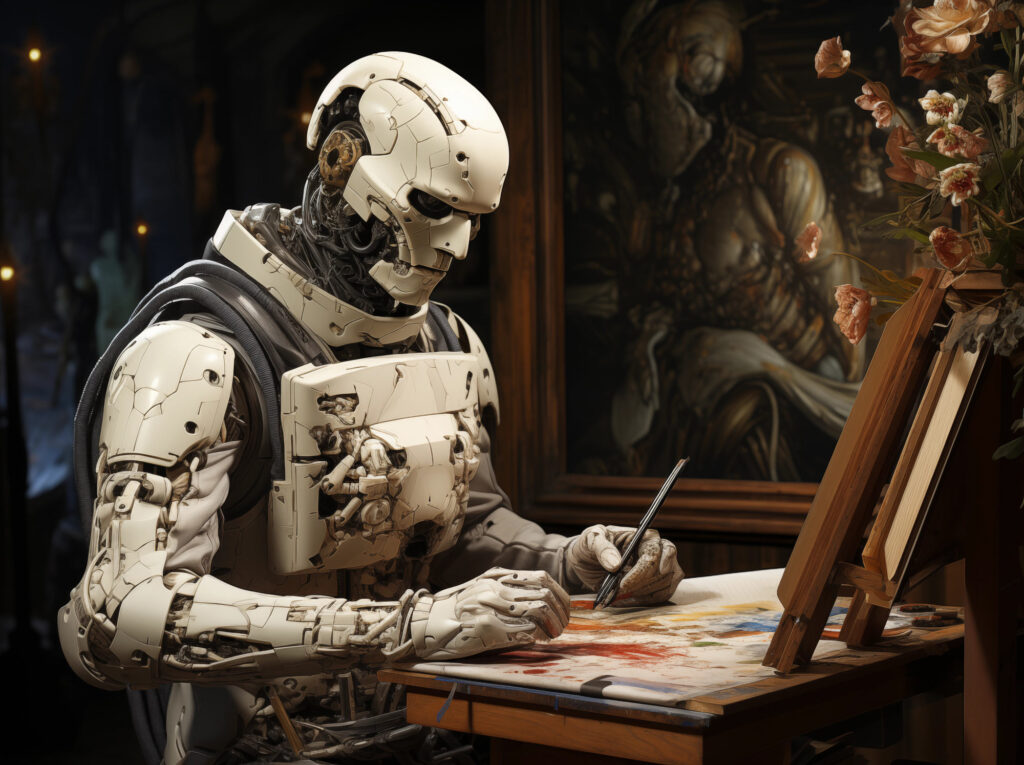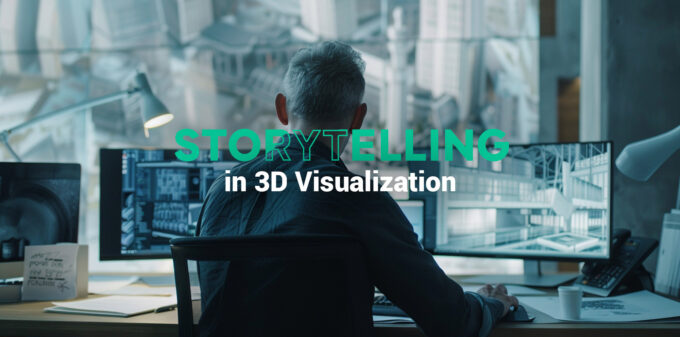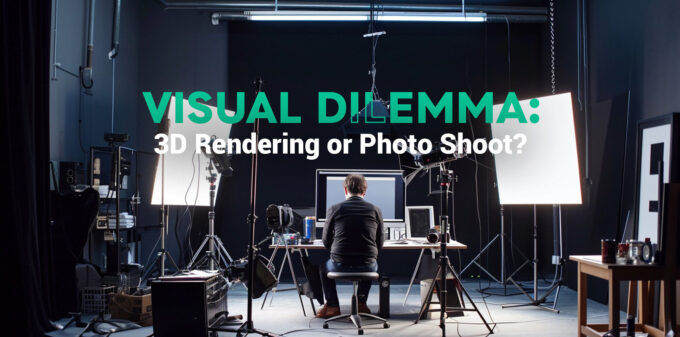
AI in ArchViz
Inherently dependent on technology, Architectural Visualization (ArchVis) lies on the bleeding edge between AI and human creativity.
Until very recently, that human creativity was regarded as the pinnacle of imagination. It embodied a lofty gold standard that few ever suspected would be challenged, much less surpassed. Ironically, Artificial Intelligence (AI), itself a product of human innovation, is forcing us to re-evaluate those assumptions.
For many, the crossing of the Rubicon came in September 2022. That was when the Colorado State Fair fine arts competition awarded first prize to Jason Allen. Mr. Allen’s entry Théâtre D’opéra Spatial was created in Midjourney, an AI program that generates images from text prompts.
There is not much detailed architecture in the winning creation but the vast circular space in the wall that dominates the background and illuminates the image is breathtaking. Peer at the edges of the picture and intricate carved details emerge. Light and shadow interplay, revealing some, hiding more, but completely drawing you into a visual masterpiece.
Each of those capabilities is a worthy addition to the ArchVis world. If you are an architect, 3D modeler, or simply an observer, be prepared for the industry you know to change very drastically, very quickly.
Are they really that different?
There are strong parallels between the way a 3D rendering engine generates images and how an AI engine achieves the same goal.
The core difference is that design and engineering programs require the user to specify every variable beforehand. Leave any one out and the program either applies a default setting for that variable or refuses to generate a model at all. In that sense, 3D rendering engines are powerful but unimaginative.
By contrast, AI thrives when left to its own devices. Imprecision is counterproductive when you use a 3D render program but vagueness is the essence of variety with AI ArchVis.
The true capabilities of this technology come to the forefront when it is given the space to ‘fill in the blanks’. Any information that it lacks is replaced with randomized data.
AI can pick and meld countless ideas from the vast repertoire of designs in its database. Unfettered by the average human’s thought patterns and with instant access to vast tracts of information, it is the ultimate creative assistant.
The other essential difference is that ArchVis AI, by its very nature, needs to be babysat. It’s fire-and-forget with a regular 3D render program – after the set data has been entered, you arrive very quickly at the final version. AI-generated images have to be tweaked and nudged and prodded, bit by bit into a final practical version.
The two most popular AI ArchVis programs today are Dall-E and Midjourney. Each generates a series of similar images based on a text prompt. Users then pick one (or more) of them to enhance and refine. This process is repeated any number of times.
With Théâtre D’opéra Spatial, Mr. Allen revealed that he had spent hundreds of hours in Photoshop with the images from Midjourney before submitting his final version.
On the surface, it’s easy to assume that AI’s greatest power is its ability to transform basic ideas into intricate visualizations. That seemingly effortless process is particularly impressive when compressed into seconds. Yet, delve a little deeper and an even more important feature emerges – the capacity to generate a practically endless series of similar visualizations.
Artists and designers will find that invaluable when presenting ideas to clients.
When a client is struggling to make a decision, AI can step in to generate a series of variants in different styles. The details are not important at this stage – the stakeholders only need to be shown the general styles so progress does not stall.
Once the client makes a decision, the 3D design team can move on to deeper details. In this case, AI rendering saves both the client and the designers from tedious back-and-forth meetings. AI effectively replaces the briefing with a swifter process that keeps the momentum going.
What next?
If it is a fascinating time to be in the ArchVis industry, it is also an unsettling time. As with any invention that leads to automation, the infusion of AI here is seen by many as a troubling portend.
The computers will take our jobs! That scenario may seem more likely than ever today but only from a very superficial perspective. Anyone with experience in the industry who has incorporated AI into their creations understands that it is a distant, if not altogether impossible eventuality.
Machines cannot deal with clients (and clients do not appreciate dealing with machines). AI cannot react to feedback and go back to the drawing board in response to feedback. It will not be able to adhere to building regulations and codes; even if that information is ‘fed’ into the system, responsible architects will always retain a person to ensure compliance.
Those technical considerations aside, AI without the human touch is devoid of a soul. There can be so much variety and so much diversity in AI-rendered images and yet, few really begin to stand out. More than the specter of losing jobs to AI, ArchVis companies will soon have to contend with a clientele who will expect miracles because “you’re using AI, aren’t you?”
This is as much a reassurance to you, my friend, as it is a caution. Fight the temptation to rely excessively on AI to fill every blank. Don’t be an observer – be an active participant in your own creative learning journey. Don’t just marvel at the wonders created for you by a computer – be the one that the AI learns from.






